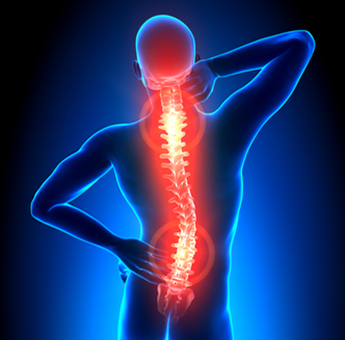Racz Catheter Lysis of Adhesions
Racz Catheter Lysis of Adhesions is a procedure used to help break down scar tissue that may be causing pain
Racz Catheter Lysis of Adhesions

What is Racz Catheter Lysis of Adhesions?
A Racz catheter is a device that is used to break these adhesions by dissolving the scar tissue. It is a specialized catheter that can enter the epidural space around the spine through which medication can be injected to help dissolve the adhesions.
Who needs Racz Catheter Lysis of Adhesions?
Adhesions refer to excessive scar tissue formation that can occur following any form of surgery. In cases where surgery has been performed on the back, scarring can occur from bleeding that may take place into the epidural space. Similar surgeries around the spine can also cause adhesions.
What are the steps in Racz Catheter Lysis of Adhesions?
Preparing for the Procedure
The procedure is fairly straightforward. Patients will be asked to lie on their stomach and will be monitored throughout the procedure, which only takes a few minutes to perform.
Cleaning and Numbing the Skin
The skin on the lower back is cleaned with an antiseptic solution and a small amount of local anesthetic is injected into the skin and the deeper tissues leading all the way to the sacrum. There may be slight pain and discomfort during the procedure, but this is usually alleviated by the local anesthetic injection.
Placing the Catheter
The catheter is then passed through a long needle that is directed towards the sacrum into the epidural space using the guidance of an x-ray machine called fluoroscope. A small amount of dye may be injected to confirm the location of the needle.
Performing the Injection
The catheter is passed all the way up to the area where the adhesions are. Then, a local anesthetic mixed with the steroid is injected so as to bathe the entire area and help relieve pain, as well as to breakdown scar tissue.
After Surgery
Following the procedure, patients are observed for a short amount of time and are then discharged home. In some patients, repeated injections may be required, so the catheter may be kept in place and not removed. Once all the injections have been administered, the catheter is removed.
Patients may experience mild numbness or heaviness in their legs following the procedure, but this usually passes after a short while.
The procedure is extremely effective at breaking down adhesions and reducing pain. Effects can start to kick in immediately after the procedure and can last up to a few months.
Risks are very few and rare. Patients may experience mild headaches, bruising at the site of injection and, very rarely, nerve damage leading to paralysis. Serious side effects include an allergic reaction to the drugs, but these are extremely rare. The procedure is ideally avoided in patients who have known allergies to these drugs or in those who have a bleeding disorder or are on blood thinning medication.
